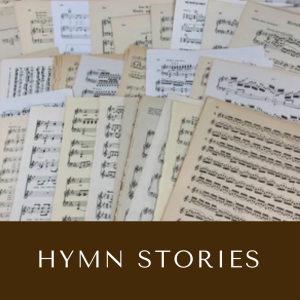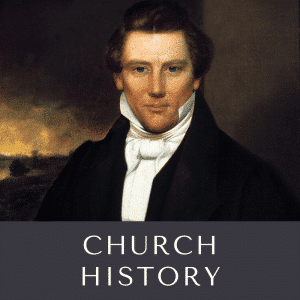Description
The Explosion of the Saluda
March 1852, the Missouri River was running with ice. A number of Latter-Day Saint immigrants were stranded at St. Louis Missouri and seeking passage to get upriver to Cainesville, Iowa where they could join the wagon trains and cross the plains to Salt Lake City. Time was pressing but the captains wouldn’t run the river in with the ice. River boats were hard to get.
Church agents finally located an older steamboat called the Saluda. It was at that time in its sixth season, and that was when most river boats were good for only three to five.
William Dunbar stood in the hold of the Saluda with James Ross inspecting the old ship. An awful feeling of dread came over both men when they looked at each other, both of them had tears in their eyes. Nevertheless time was pressing and money for lodging was running low and Dunbar booked passage on the boat, notwithstanding an awful feeling of foreboding.
A short time later he and his family got off and went shopping there in St. Louis for supplies. As they did so and they’re out in the community, the Saluda’s bell clanged and it immediately cast off and set sail upriver. The Dunbar’s missed the boat, turns out they wouldn’t be the only ones that missed the boat, other families did as well.
Mary Jane Walker and her family supposedly missed the boat and had to catch another one. Well, the Dunbar’s boarded another vessel, the Isabel and followed the Saluda upriver. The Saluda went all the way up the river where the river turns and goes across Missouri to the city of Lexington.
At Lexington, the Saluda arrived sometime in the week of April 4, 1852. Now, just up the river from Lexington, Missouri, ( remember it’s coming down North to South and they’re headed North), just up the river from Lexington was a sharp bend in the Great Missouri. Four times in successive days, Captain Francis Belt of the Saluda tried to get up and around that bend in the Missouri, but the old Saluda with only one engine just couldn’t make it around that bend. Current was too swift, ice load etc.
On the meantime, William Dunbar and his wife Helen and their children caught up to the Saluda there at Lexington. The steamboat Isabel that they were riding on traveled around the bend. The Dunbar’s looked back and saw the Saluda that they booked passage on and Dunbar went to the captain and said, “You promised to let us get back onto the Saluda.”
The captain agreed. The Isabel cut power and drifted back down around and the Dunbar’s transferred over to the Saluda who then spent the night of Thursday, April 8, 1852, camped on the open deck of the Saluda just above the boilers.
Early the next morning, William Dunbar got up early and went on shore to get something. While he was gone, Captain Belt in frustration ordered the burners the boilers fired until they were red-hot.
He declared, “I’ll round this bend or blow this steamboat to hell.”
The mooring lines were cut loose and the engines engaged, the paddle wheel was in its second rotation when the boilers erupted in a tremendous explosion.
Abraham O. Smoot (A.O. Smoot) later recalled,
“I saw the bodies of many of the unfortunate passengers and various parts of the boat flying in the air in every direction. My own preservation, he had been on the boat just moments before and offered passage on that boat for free if he would just get on, and he refused. My own preservation I can only attribute to the providence of the Almighty, for if I had remained a moment on the wharf to see the boat start as would have been very natural for a person to do, I would have been blown into eternity as those were who stood there.”
The deafening explosion of the Saluda was heard for miles, a 600 pound safe was blown off the boat and landed on a bluff above the river. An estimated 100 of the 200 people on board the Saluda were killed, 29 of whom it is estimated were members of The Church of Jesus Christ of Latter-Day Saints.
When William Dunbar regained consciousness, he was lying at the water’s edge. Moments later, he watched his wife die before his very eyes. He found the body of his young son also killed by the explosion but the body of his little girl, he was never certain to have found unidentified.
Many of the victims of the Saluda were never recovered.
Ann Knox Gardner, believed that her husband Alexander who had left Scotland early come in to the United States while the family stayed behind, many today believe that Alexander Gardner was among the victims of the Saluda whose body was never recovered. They were lost in the swift waters of the Missouri and never found.
William Cameron Dunbar would later affirm that he was warned three times by the Holy Ghost not to board the Saluda but because of pressing exigencies, he did not listen and lost his family to his everlasting regret.
A.O. Smoot on the other hand, felt one ill premonition upon inspecting the boat and refused to board her even after he was offered the free passage. He would live. Both men would learn valuable lessons that would carry them into eternity.
The Saluda remains to this day one of the worst disasters in overland migration and in our history and certainly on the Missouri River.
Now I tell you that story not to dredge up painful memories but to make a point. Today, our world is sailing toward rough waters. The wickedness and the depravity of mankind will very soon explode into disaster. The Almighty through his Spirit and his chosen servants, is warning us to get off that boat.
“Come ye out from the wicked”, he has commanded.
“Be ye separate and touch not their unclean things”, he pleads with us.
My friends, I pray every day that we will have the courage and the strength and the grace of God to do exactly that.
Get off the boat that is sailing to disaster.
Copyright Glenn Rawson
















Reviews
There are no reviews yet.